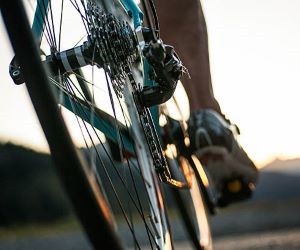Learn how to choose between clipless and flat pedals by comparing efficiency, control, comfort, and riding style to find the right setup for your needs.
WHAT FACTORS MATTER MOST WHEN BETTING LIVE DURING A TOUR DE FRANCE MOUNTAIN STAGE?
Mountain stages in the Tour de France are legendary—steep gradients, unpredictable attacks, and dramatic time gaps make them thrilling for fans and bettors alike. Live betting adds another layer of excitement, but success depends on understanding the unique variables shaping outcomes in real time. This article explores the main factors—from rider condition and team tactics to weather shifts and course profiles—that determine how mountain stages unfold, equipping you with sharper insights for informed decisions.

Rider condition and climbing form
Live betting during a mountain stage starts with evaluating the riders themselves. Climbing specialists, general classification contenders, and opportunistic breakaway riders all behave differently when the road tilts upward. Recognizing form on the day is often more telling than pre-stage predictions.
Current form and fatigue
Even top climbers can struggle if they’ve spent energy on previous stages. Observing body language, pedal cadence, and breathing patterns during live coverage helps bettors spot signs of fatigue or hidden strength. A rider spinning smoothly at high cadence on a steep gradient often signals strong condition.
Performance history on climbs
Some riders excel on long, steady climbs while others thrive on explosive gradients. Reviewing past performances on similar ascents—especially earlier in the same Tour—can provide clues about how they’ll perform in the current stage.
Mental resilience
Climbing is as much psychological as physical. Riders who respond confidently to attacks or maintain composure under pressure are often safer bets than those who visibly crack under stress. Watching reactions when rivals surge reveals mental toughness in real time.
Look for smooth pedaling and controlled breathing
Compare performance on similar past climbs
Watch for resilience during rival attacks
Factor in fatigue from earlier stages
Understanding rider condition is the first filter in live betting—spotting who has the legs on the day often separates winning bets from hopeful guesses.
Team tactics and race dynamics
In the Tour de France, no rider wins alone. Team strategies play a decisive role in shaping mountain stage outcomes. Live bettors must analyze not just individual riders but also how teams execute tactics to control the race.
Domestiques and pacing
Strong teams deploy domestiques to set a relentless tempo, discouraging attacks and protecting their leader. When a team lines up at the front and raises the pace, it signals confidence in their leader’s ability. Conversely, if a leader is isolated early, their odds worsen significantly.
Breakaways and chase groups
Mountain stages often feature early breakaways. Live bettors must assess whether the peloton will let them succeed or reel them back. Factors like time gaps, composition of the break, and motivation of teams influence outcomes. A breakaway with multiple strong climbers poses a real threat if the favorites hesitate.
Attacks and counterattacks
Mountain racing is fluid—attacks can happen anytime. Observing how quickly leaders respond to accelerations is critical. A rider who immediately marks rivals demonstrates strength, while delayed responses suggest vulnerability. These dynamics can swing betting odds within minutes.
Monitor whether leaders have team support
Evaluate breakaway strength and cooperation
Watch leader responses to sudden attacks
Track time gaps between groups in real time
Recognizing how tactics unfold in the moment allows bettors to anticipate momentum shifts before odds fully adjust.
External factors and live conditions
Beyond riders and teams, external factors—weather, terrain, and timing—often determine how mountain stages play out. These variables are especially important in live betting, where conditions can shift unexpectedly.
Weather conditions
Heat waves, rain, or sudden winds drastically influence performance. Some riders thrive in hot conditions, while others excel in cooler, rainy weather. Watching how conditions evolve mid-stage can provide an edge when markets lag in adjusting odds.
Gradient and altitude
Not all climbs are equal. Steep gradients favor explosive climbers, while steady ascents benefit diesel-style riders. High altitude also disadvantages some competitors more than others. Live bettors should note when a climb shifts gradient, as this often triggers key attacks.
Stage timing and fatigue
A mountain stage late in the Tour adds fatigue as a decisive factor. Riders who looked strong in week one may falter in week three. Observing body language during final climbs reveals who still has reserves and who is fading.
Track live weather updates for sudden changes
Match rider strengths to climb gradients
Account for cumulative fatigue in late stages
Note altitude effects on performance
When bettors integrate these external variables into live analysis, they gain an edge over those relying solely on pre-stage odds or historical form.
YOU MAY ALSO BE INTERESTED






